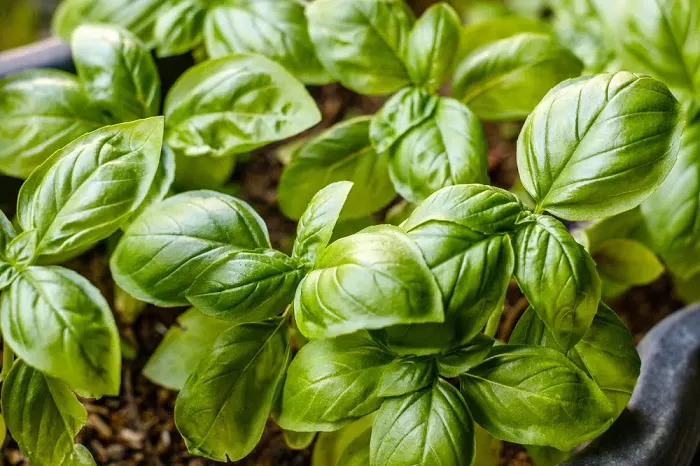Basil, a versatile and aromatic herb, is a staple in many gardens. Known for its culinary uses and delightful fragrance, basil thrives with the right amount of water. Understanding its watering needs is crucial for healthy growth and abundant harvests. Whether you are a seasoned gardener or a beginner, mastering the art of watering basil can transform your garden into a lush, productive space.
Understanding Basil’s Water Requirements
Basil plants are sensitive to both overwatering and underwatering. Finding the right balance is key to their success. In general, basil needs about 1 to 1.5 inches of water per week. This amount can vary based on factors such as climate, soil type, and the plant’s stage of growth. Let’s delve deeper into these aspects to ensure your basil plants receive the perfect hydration.
Climate and Weather Conditions
The climate in which you grow basil plays a significant role in determining its watering needs. In hot and dry climates, basil may require more frequent watering, as the soil dries out quickly. Conversely, in cooler and more humid climates, you might need to water less frequently to avoid waterlogged soil. Observing the weather and adjusting your watering schedule accordingly is essential.
Soil Type and Drainage
The type of soil in your garden or container also affects how much water basil needs. Well-draining soil is ideal for basil, as it prevents water from pooling around the roots. Sandy soils drain quickly and may need more frequent watering, while clay soils retain moisture longer and require less frequent irrigation. Adding organic matter like compost can improve soil structure and help maintain consistent moisture levels.
Growth Stage of Basil Plants
Basil’s watering needs change as it grows. Seedlings require more frequent but lighter watering to keep the soil consistently moist but not soggy. As basil plants mature, they can handle less frequent but deeper watering. This encourages the development of a strong root system, which is vital for the plant’s overall health and productivity.
Watering Techniques for Basil Plants
Proper watering techniques can make a significant difference in the health of your basil plants. Here are some tips to ensure you water your basil correctly.
When to Water
The best time to water basil is early in the morning. This allows the leaves to dry out during the day, reducing the risk of fungal diseases. Watering in the evening can leave the leaves wet overnight, creating a humid environment that encourages disease.
How to Water
When watering basil, aim for the base of the plant rather than the leaves. This directs water straight to the roots, where it is needed most. Using a drip irrigation system or a soaker hose can be very effective, as it delivers water slowly and directly to the soil.
Signs of Overwatering and Underwatering
It’s important to recognize the signs of improper watering. Overwatered basil plants may have yellowing leaves and a drooping appearance. The soil may also feel waterlogged and have a foul smell. On the other hand, underwatered basil will have wilted leaves and dry soil. Regularly checking the soil moisture level can help you avoid these issues.
Adjusting Watering for Different Environments
Whether you grow basil in a garden bed, a container, or indoors, the watering needs may vary slightly. Let’s explore how to adjust your watering practices for each environment.
Garden Beds
In garden beds, basil plants benefit from consistent soil moisture. Mulching around the plants can help retain moisture and regulate soil temperature. Water deeply once or twice a week, depending on the weather conditions and soil type.
Containers
Basil grown in containers needs more attention, as the soil dries out more quickly. Ensure your containers have drainage holes to prevent waterlogging. Water your potted basil when the top inch of soil feels dry, usually every few days.
Indoor Basil Plants
Indoor basil requires careful watering, as the environment is more controlled. Place the pot in a bright spot and water when the soil surface feels dry. Avoid overwatering, as indoor plants generally need less water than those outdoors.
Tips for Consistent Hydration
Maintaining consistent hydration is crucial for healthy basil plants. Here are some additional tips to help you achieve this.
Using a Moisture Meter
A soil moisture meter can be a valuable tool for determining when your basil needs water. Simply insert the probe into the soil, and the meter will indicate the moisture level. This takes the guesswork out of watering and ensures your plants receive the right amount of water.
Creating a Watering Schedule
Developing a regular watering schedule can help you stay consistent. Mark your calendar or set reminders on your phone to water your basil plants. However, always check the soil moisture before watering, as weather conditions can affect the soil’s water retention.
Observing Plant Health
Regularly inspect your basil plants for signs of stress. Healthy basil should have bright green leaves and firm stems. If you notice any changes, such as yellowing or wilting, adjust your watering practices accordingly.
Conclusion
Watering basil plants is a delicate balance that requires attention to detail. By understanding the factors that influence their watering needs and employing proper techniques, you can ensure your basil thrives. Whether in a garden bed, container, or indoors, providing the right amount of water will reward you with a bountiful harvest of this fragrant and flavorful herb.


